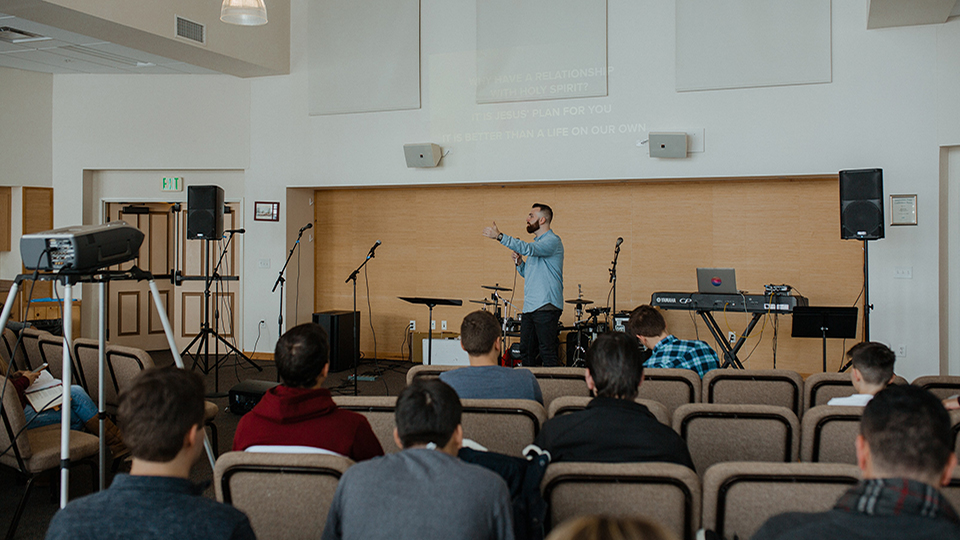
In our journey of “two steps” we have already seen the two steps a pastor must take (grow himself, build a team) and the two steps that only the congregation can take (face reality, create an embracing environment). So what’s left?
In the final installment of this series, we will discuss the two steps that the pastor and people must take together.
The first of these is to “discover the engine.”
Okay, that seems a bit unclear at first blush, but every church has an “engine” that can generate momentum and drive it forward. There is something that your church was made to do. Baseball players speak of a “wheelhouse,” a place where the hitter’s strength meets the pitch and maximizes his capacity. A pitcher wants to avoid a hitter’s “wheelhouse” because that’s where the hitter is at his best. For golfers, the idea is the “sweet spot”–that place on the golf club that makes a perfect connection, allowing the golfer to hit the ball where he intended, making his best possible shot.
Okay, maybe the sports analogies don’t clear this up for you, but there is something that fits. There is a focus, an effort, a ministry priority that every pastor is made for. Likewise, there are certain things a church can do very well. When you find these, you find the church at its most effective best.
The “engine” is a merger of three key components:
1. Leader’s passion
Not long ago, I visited with a pastor of a small struggling congregation. He was frustrated to say the least, so I asked him what he was truly passionate about. I figured talking about that passion might lift his spirit a bit. He begin telling me how badly he wanted to bring hope to broken people. His own story of brokenness and the love a church family had brought helped me see how this passion had developed. To see that same thing happen for others was the very reason he felt called to ministry. “I want to see broken people healed,” he tearfully exclaimed.
I instantly concluded that this was an “engine” he could drive forward. So I asked him, “Do you think your congregation could help you do this?” This leads us to the second component.
2. People’s abilities
What can we be good at? In most struggling churches, there’s a long list of things we’re not very good at, and when we spend a lot of time doing what we’re not good at, well, frustration is guaranteed (so is lack of growth). No one enjoys watching us try to maneuver our weaknesses.
He said, “Yes!” He knew that his people cared deeply for broken people and he’d seen them respond in love again and again.
3. Community need
I guessed that such an engine could connect powerfully with many people in his community. So we begin talking about how to shape the ministry of his church around this vision–healing broken people. It seemed to be the perfect merger of leader passion, congregation ability, and community need.
That’s where you find your engine. I attend a church where that engine is “life-change.” Everything is driven by this single priority. I pastored a church where “belonging” was the driving force. I’ve seen others where “investing in the next generation” or “passionately teaching truth” fire them up. Every church needs to find its wheelhouse or sweet spot–the central focus that can become their very best effort of ministry.
So together–pastor and congregation–the search for its “engine” becomes paramount. In church life, many books or assessment surveys try to tell you that addressing your weaknesses will get you where you want to go. But remember this:
Momentum and growth flow from maximizing your strengths. Endurance is achieved by addressing your weaknesses.
Find the engine, but do it together. Both pastor and people have to bring their contributions to the same table. When you find the spot where the leader’s passion, congregation’s abilities, and community’s needs merge, you will find the path that can bring the momentum you crave.
Aim outward.
Inward focus is the bane of the declining church. Like the natural pull of gravity, inward focus is where congregations drift unless they are intentional otherwise. We get focused on ourselves, what ministers to us, what we enjoy, how we get help for our problems…the list goes on and on. Little wonder that after walking a mile or two down this path, we get self-focused.
Congregations that lose their sense of mission have little left to do but look at each other. And after a while, it’s not hard to start picking at each other and finding flaws in one another. Conflict, broken relationships, and general weariness of each other is quite common in the latter stages of the church’s life cycle. The more inward focused we become, the less healthy the church will be.
Aim outward. The best way to do this is to take the engine (what we developed in the previous step) and aim that engine into the community. If the church’s engine is loving people, then find ways to show love to them out there. If the church has excellent teaching gifts, start aiming those gifts into the needs of the community. If musical talent fills the church, take it to the city park–stop limiting that ability to Sunday mornings inside your walls.
The best things happen when a church is aimed outward. Such moments give the people purpose, create potential for growth, and get us as close as we’ll ever be to living God’s intent for us. Remember, CHURCH ISN’T ABOUT US! It’s about HIM and THEM! When we get that focus, good things can happen.
Of course, God cares for our needs and wants to use His Church to minister to us. But He does that best when we focus on HIM and THEM. “Seek first the kingdom…” Remember?
I’ve yet to be in a growing church that wasn’t focused on those outside their church. Through friendship, ministry effort, and clear passion those churches see a harvest field and often abandon their own comfort to get out there.
At the same time, I rarely see such a church not growing. But it’s a partnership. I’ve met pastors who were driven to reach the lost, but their people weren’t on board. I’ve even encountered one or two scenarios where the passion was limited to the people, and the pastor was blocking the path. The point is that this must be done together.
Take your best efforts outward. Do the things you can do well in ways that your community can benefit. Figure out the engines of your church and drive yourselves beyond your church walls.
An outward focused church is the only church that fulfills Christ’s passion.
Want more ThoughtHub content?
Join the 3000+ people who receive our newsletter.
*ThoughtHub is provided by SAGU, a private Christian university offering more than 60 Christ-centered academic programs – associates, bachelor’s and master’s and doctorate degrees in liberal arts and bible and church ministries.



